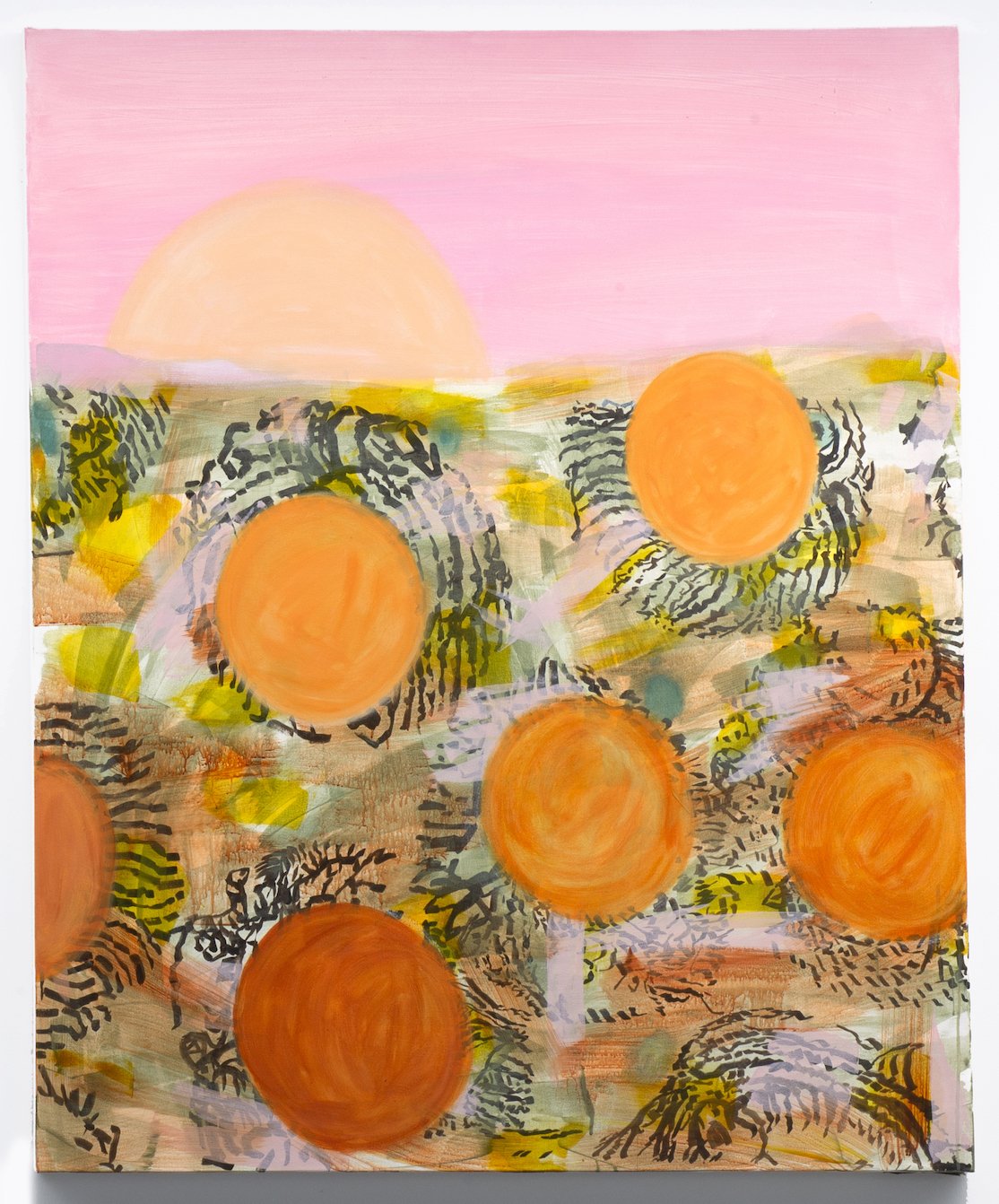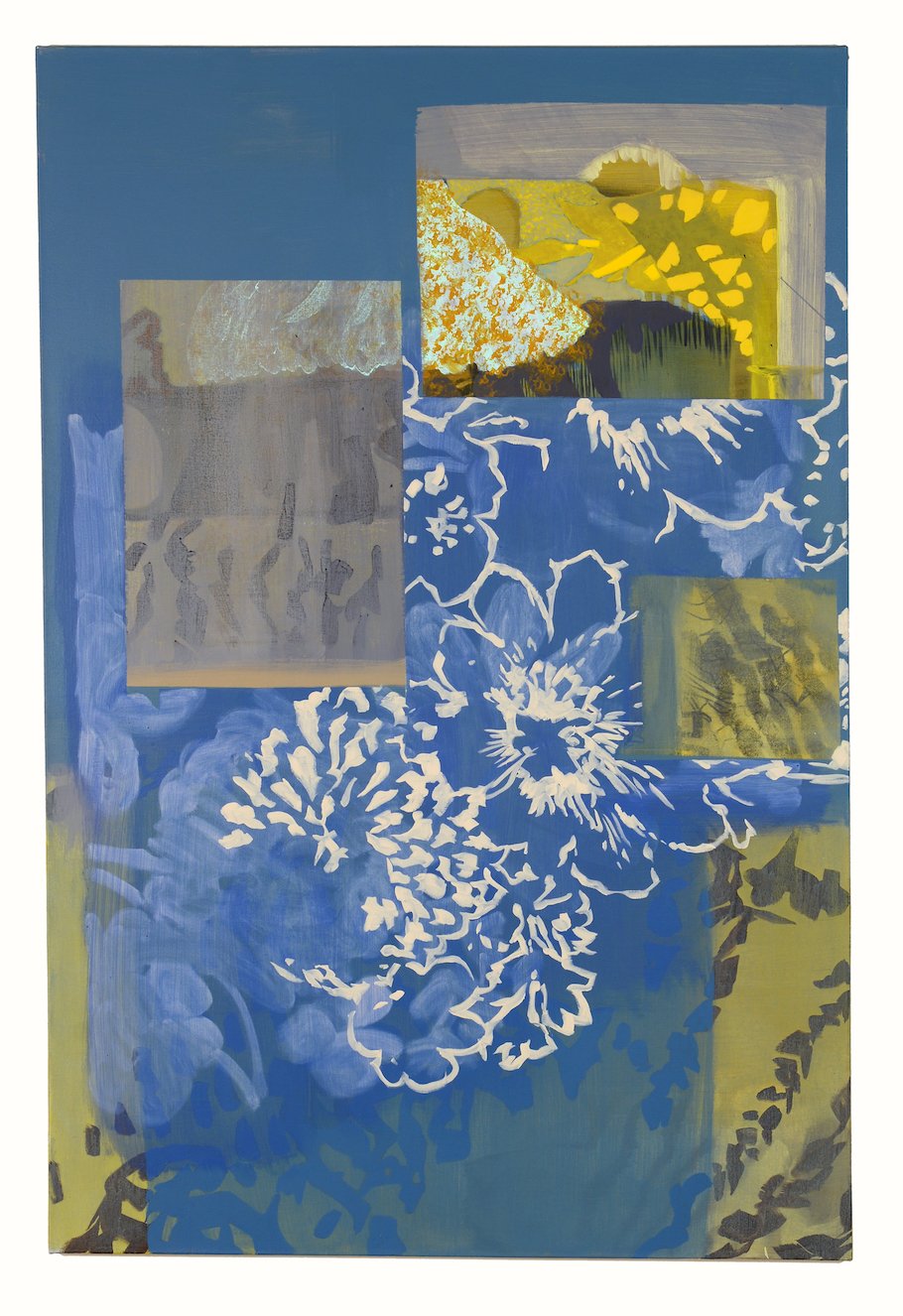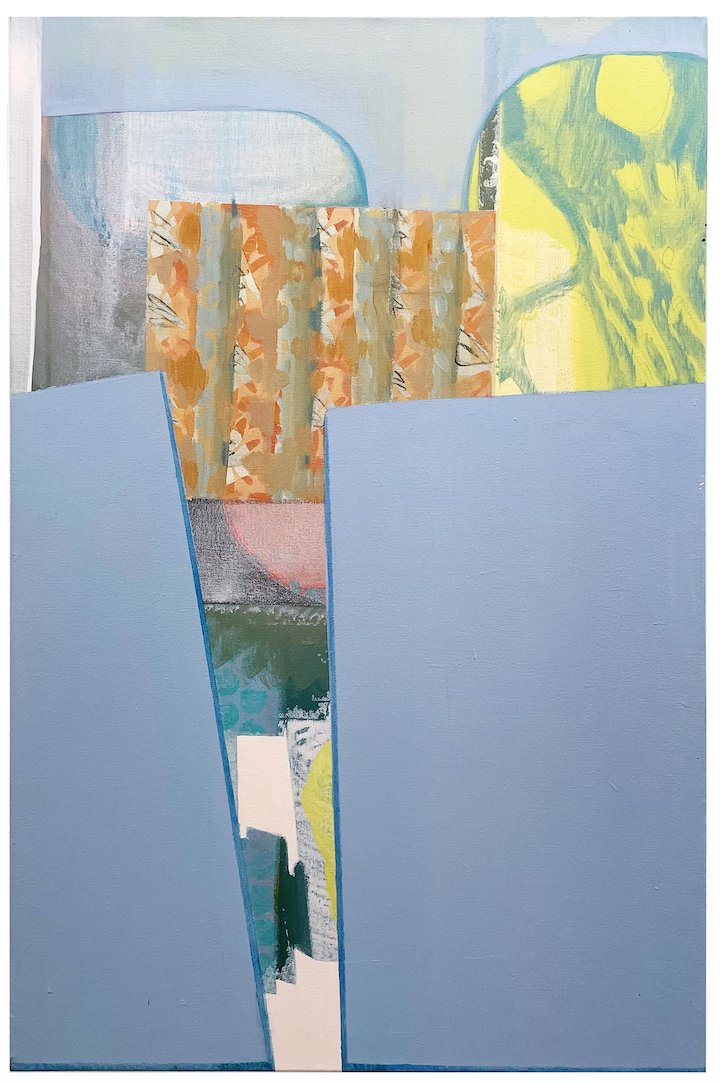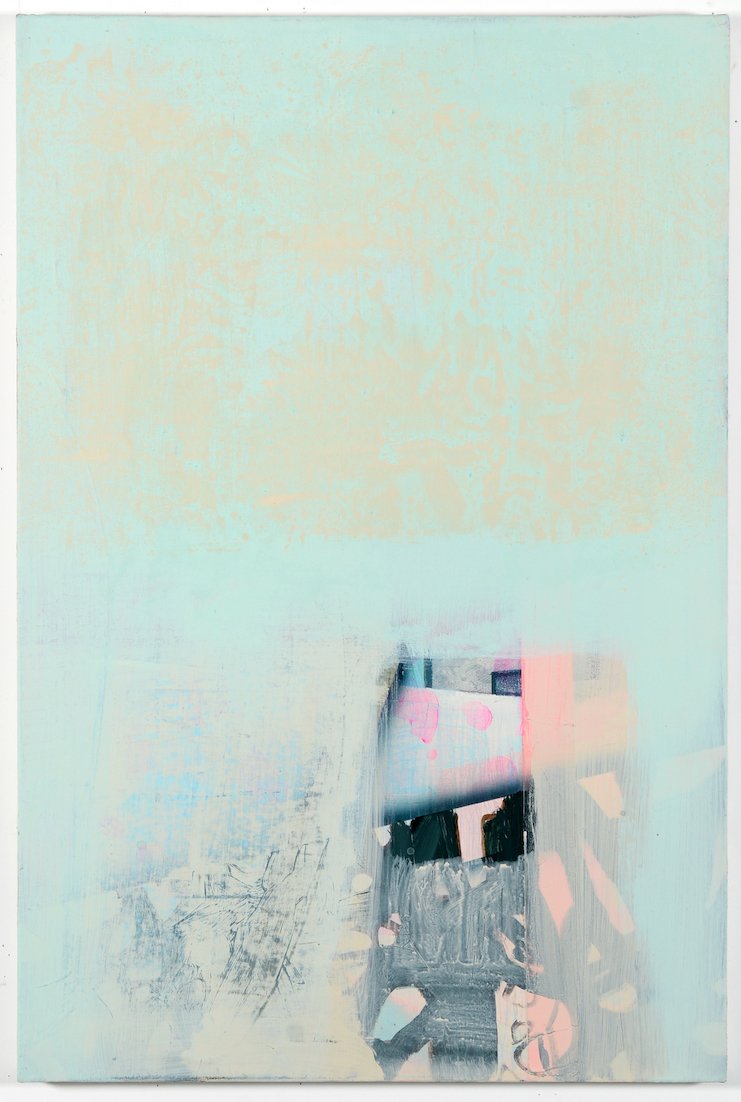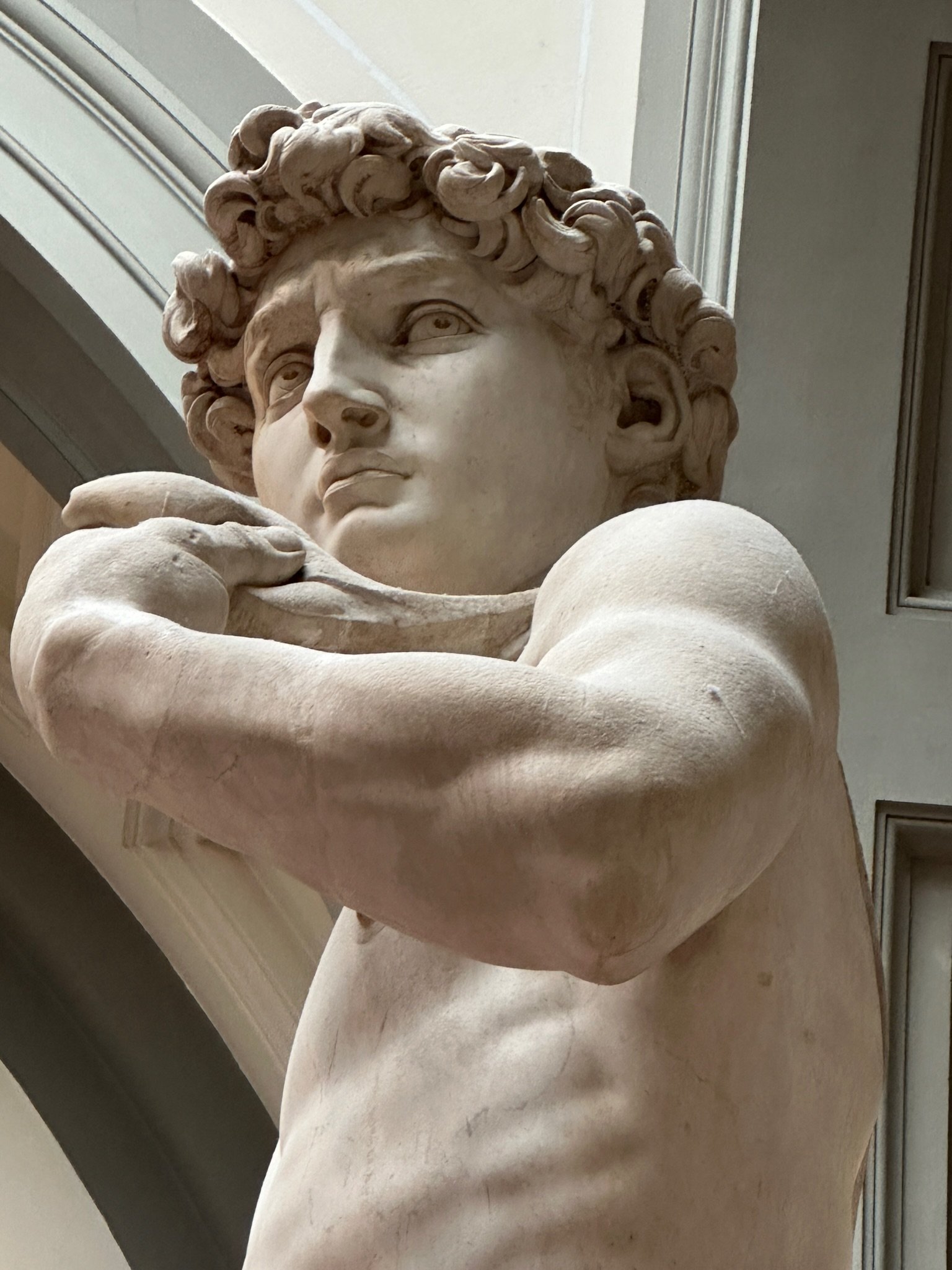Interview with artist Brit Borcher
Brit Borcher just graduated from the University of Arkansas, Fayetteville, with an MFA in studio art. She is originally from Wisconsin and earned an BFA in music theater performance from Viterbo University. She then moved to New York and earned a BFA in studio art at Hunter College before attending UAF. Brit’s paintings are a visual language of abstracted landscapes and interiors she uses to communicate her life experiences. More of Brit’s work can be found at River Arts on Water Gallery in Wisconsin, MIXD Gallery in Rogers, Arkansas, and at her Instagram.

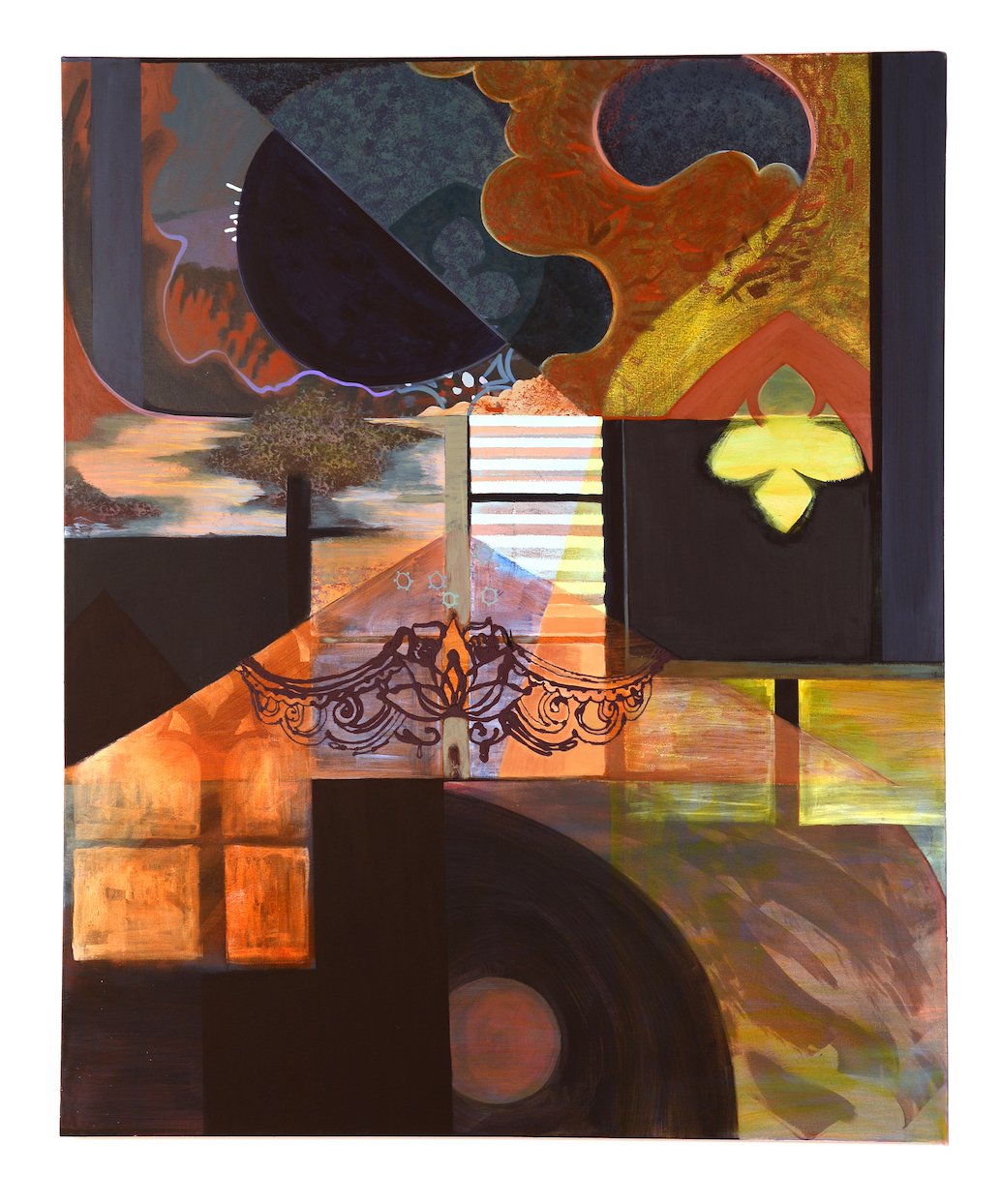

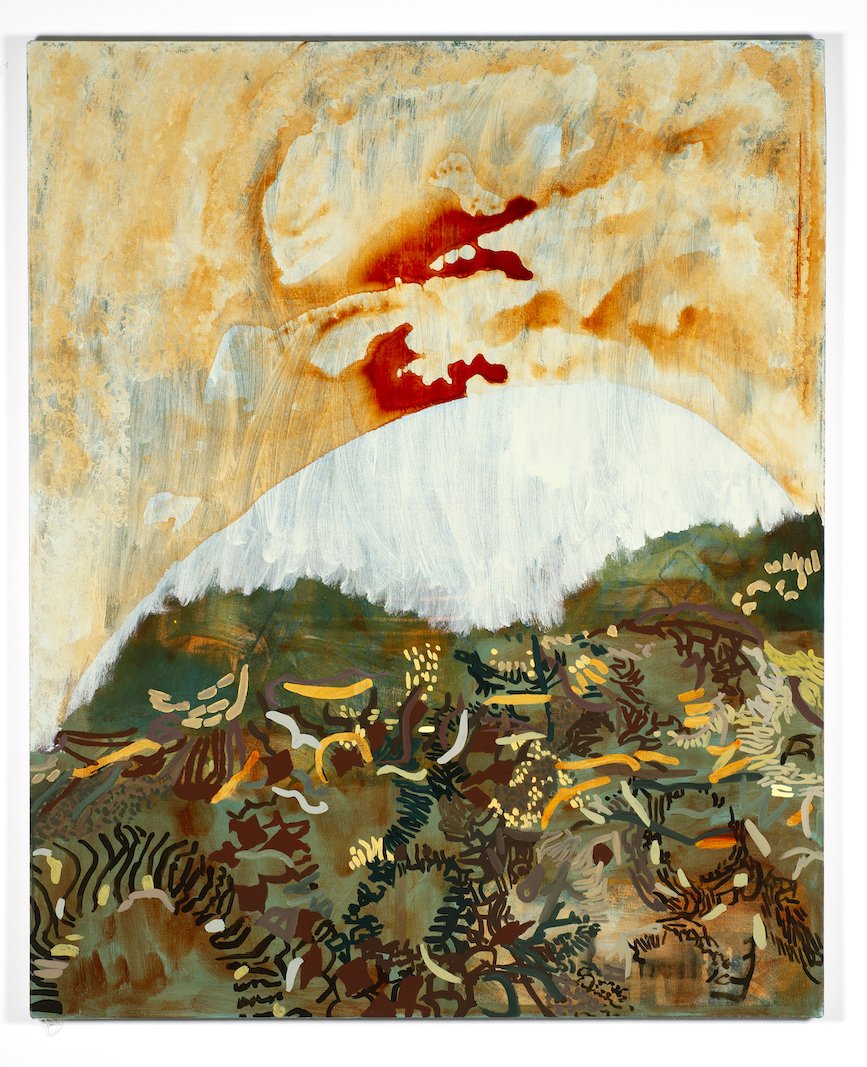
AAS: Brit, I would first like to congratulate you on earning your MFA from the University of Arkansas, Fayetteville in May. Where did you complete your undergraduate education and why did you choose UA Fayetteville for your MFA?
BB: Thank you, Phil, and thank you for providing an opportunity to share my work with your followers. To answer your question, my undergraduate education is comprised of two creative journeys. I studied and earned a BFA in music theater performance from Viterbo University in my home state of Wisconsin before moving to New York City. While living and working in New York, I studied and earned a second BFA in studio art, specifically painting, at Hunter College where I was a Kossak Painting Fellow.
My experience at Hunter was so rich with contemporary art conversations and painting nourishment that I knew that I wanted to continue studying. I chose to attend UAF for my MFA because I thought the program would equip me with opportunities to push boundaries in my career. I was initially drawn in by the opportunity to reside within robust Painting and Drawing departments staffed with artistically engaged professionals like UAF’s. It was a privilege to be supported by a creative community for three years, especially since the program, at the time, was actively invested in expansion and growth. It was a unique opportunity to witness the structuring of an academic program from within.
AAS: Was art a big part of your life growing up?
BB: I am very fortunate to have a mother who is an artist and art educator, so yes, creative endeavors have been a consistent part of my life. Growing up with an arts advocate involved actively participating in a broad range of creative educational experiences as well as trips to museums and galleries. Originally, I was more interested in vocal music, but now that I think about it, I’ve always had a hand in some form of visual art. For instance, while I was studying music theater performance, I spent a good deal of time in the University costume shop constructing costumes for productions and working as a scene painter.
AAS: Tell me about your thesis show, From an Unlikely Place.
BB: My thesis exhibition, From an Unlikely Place, is a collection of eight ambitiously scaled paintings created while in residence at the University of Arkansas. As a body of work, these paintings examine the intersections of landscape painting, gendered gaze, feminine experience, and the language of abstraction. By combining different elements of collected culture into one visual space, I invented images that, in their accumulation, could speak to an experience I understood. The validation of female experience has become increasingly important to me and is a primary goal in my work. I related these varied elements to the experiences of oppressed gender and geographical stereotypes that I experienced as a woman raised in the Midwest.
I have a great appreciation for words. One of the challenges I faced while working on this project was locating points of connection between verbal and visual language. As an artist, I am curious about the potential an individual's visual language; in my case, a concoction of abstract and figurative forms, has to communicate the quality of experience. For me, the exhibition title reflects the strangeness of my endeavor: to be a woman working with paint, attempting to locate herself within a historically exclusionary practice, image-making from a lexical mindset, and having the privilege to openly do so. All of it is unlikely to some extent.
AAS: I want to ask you first about A Step Too Far. It is a large painting and to me it seems to almost summarize your work and your aesthetic – color palette, graphic elements, composition. I think it’s wonderful. Tell me about that piece.
A Step Too Far, 72” x 68”, acrylic on canvas
BB: It sounds like you might be responding to the vast vocabulary of forms and inherited associations related to abstract painting that I juggle. Whether ambiguous or overt, references in this painting to the human body, pattern and decoration, interior and exterior spaces, and architecture, are plentiful. A Step Too Far resisted resolution and accumulated much during the painting process. Nothing about the construction of this painting was static. There were many instances in which sacrificing an idea or bit of imagery I felt kinship with was necessary to get closer to my understanding of a feminine experience or gaze.
If I were to describe the imagined world of A Step Too Far, I would begin with a moment where unrelated detritus surprisingly converges into belonging. There is a whole world of connections and associations present. Lacy bands and folded fabrics mimick the steep climb of a nearby hill, architectural framework buckles under the weight of numerous tiny moons which have snapped off and landed haphazardly into a ghostly scrapyard strewn with remnants of vehicular on-ramps, retired string lights, and oversized scaffolds laid to rest. A manicured range of produce patiently awaiting harvest guides the eye toward a pocket of escape near the center of the painting but also highlights the slight slips into what exists beyond, behind, and below, places where the acts of peering into and peeking around became increasingly important. Even the small grid of windowpanes at the bottom of the composition reminds me of looking back into a space through small, weather-caked windows. I like the idea that as a viewer there is an opportunity to simultaneously consider this painted world from a position within and one beyond.
AAS: Another large painting is The More You Play With It, The Harder It Gets. It has strong graphic elements but, again, balanced by color, which I really like. Tell me about it.
The More You Play With It, The Harder It Gets, 72” x 48”, acrylic on canvas
BB: The surface of The Longer You Play with It, The Harder It Gets is heavy, laborious, and in some sections, downright chunky. Painting a landscape in the orientation most often associated with portraiture was challenging. Instead of thinking about vast horizontal expanses stretching across the width of multiple canvases, I chose to construct an image that respected the narrow verticals of the stretcher but also conveyed perceptual depth for the viewer. Usually, this endeavor involves investigating something subterranean towards the bottom of the image or negotiating a visual undercut into space. That wasn’t the case with The More You Play With It, The Harder It Gets. Instead, I found a new challenge: the ambiguous middle.
As a possible solution to this painting problem, I thought about a shuttered view. What would happen if I deliberately placed a belt-like barrier that spanned the central section of the painting. I borrowed a small striped section from another painting, Sensitive Spot, reversing and inverting imagery as needed and ended up with Daniel Buren-esque striped interventions. The viewer has visual access to the top and bottom of the image but must navigate through horizontal bands of color if they want both simultaneously. This solution slows down perception and encourages the integration of visual surface and architectural space.
AAS: Have you always painted abstracts?
BB: To answer simply, yes. Whether painting, drawing or printmaking, the legacy of Abstraction has always been present in what I make, and if someone asks me what style of paintings I make, “abstract” provides an entry point for engagement with the work. But I don’t really think of my paintings as abstractions. To me, “abstraction” implies a process of removing representational elements from a source, like peeling away the layers of something until you reach its essence. This is complicated because I am an improvisational painter and very rarely work from observation or source imagery. Instead, though it may not be apparent, I am usually working towards some degree of representation, sticking layers back on and then peeling them away again until I hit a sweet spot that straddles the imaginary line between abstraction and representation. For me, the paintings are really fusions of abstraction and figuration. I think that is a commonly shared pursuit among painters today. Perhaps this pursuit defies definition and that’s what keeps it interesting and relevant.
AAS: One of my favorite pieces is Banana Split Ends. It is a relatively small piece. How did that piece develop? Was it an experimental piece? I think it is an amazing use of color and I just cannot stop looking at.
Banana Split Ends, 10” x 8”, acrylic on canvas
BB: It’s a dense little nugget-of-a-painting, I’m glad you’re showing it some love. I should note that Banana Split Ends is not part of my thesis exhibition, though it was made during the same time, so it seems relevant to discuss. As a studio artist I am constantly scrambling towards deadlines and my studio practice reflects that. I paint constantly and fast. Pieces like Banana Split Ends exist in contrast to that mode of production. To be honest, I enter the act of painting wherever I can locate accessibility. Sometimes, I find the opening through paint’s materiality. Paint can do some wickedly wonderful things if you are open to exploring and have the privilege of time to do so. I’ve come to realize that paintings with a generous surface, like Banana Split Ends, tend to have a long life in the studio. They are generally modest in size because the process of give and take, building up and knocking down the surface utilizing additive and subtractive methods to arrive at the final image, is time consuming and demanding. That’s asking a lot of my studio time, sometimes too much. I still consider them part of a collection of paintings, their own body of work, but one that I will work through slowly for an extended period, possibly years.
AAS: What do you think are some of the most important things you learned during your time at UAF?
BB: The importance of good studio snacks… But seriously, as a newly minted MFA, I understand that UAF has left deep impressions on me. Most importantly, I am leaving with strong relationships to resiliency, tenacity, resourcefulness, and empathy. I can’t think of a more important skillset for a creative professional to have.
AAS: You did large diptych titled Hers and Hers. Did you paint those intending the two to be a diptych?
BB: In Hers and Hers, identically sized canvases arranged as a diptych appear to impossibly mirror the interior of a home from multiple angles. I originally intended for these two canvases to be installed as an abutted diptych where two canvases combine to create one continuous image. The two largest paintings in the exhibition, Fowl Behavior and And Now You’re Mine, each spanning 12’ are formatted in this manner to provide an immersive landscape experience for viewers. At some point in the painting process, Hers and Hers shifted towards interior space, coercing viewers to negotiate multiple versions of the same place simultaneously. Descriptively “Hers” is a place where leafed branches climb windowed walls and poke through tinted glass while a negotiation of what swings open to pass through and what serves only as adornment is constantly at play. Sills and sashes create layers of framework to draw attention to worn and peeling textiles against a backdrop of drifting afternoon light. Ghostly figures on the verge of dissolving hover in and around hastily wiped windows, and a violet haze rises from the depths, looms at the doorway under a pediment of decorative scribbly flowers as layers of ideas are built into the layers of paint.
Hers and Hers, diptych, 72” x 48” each, acrylic on canvas
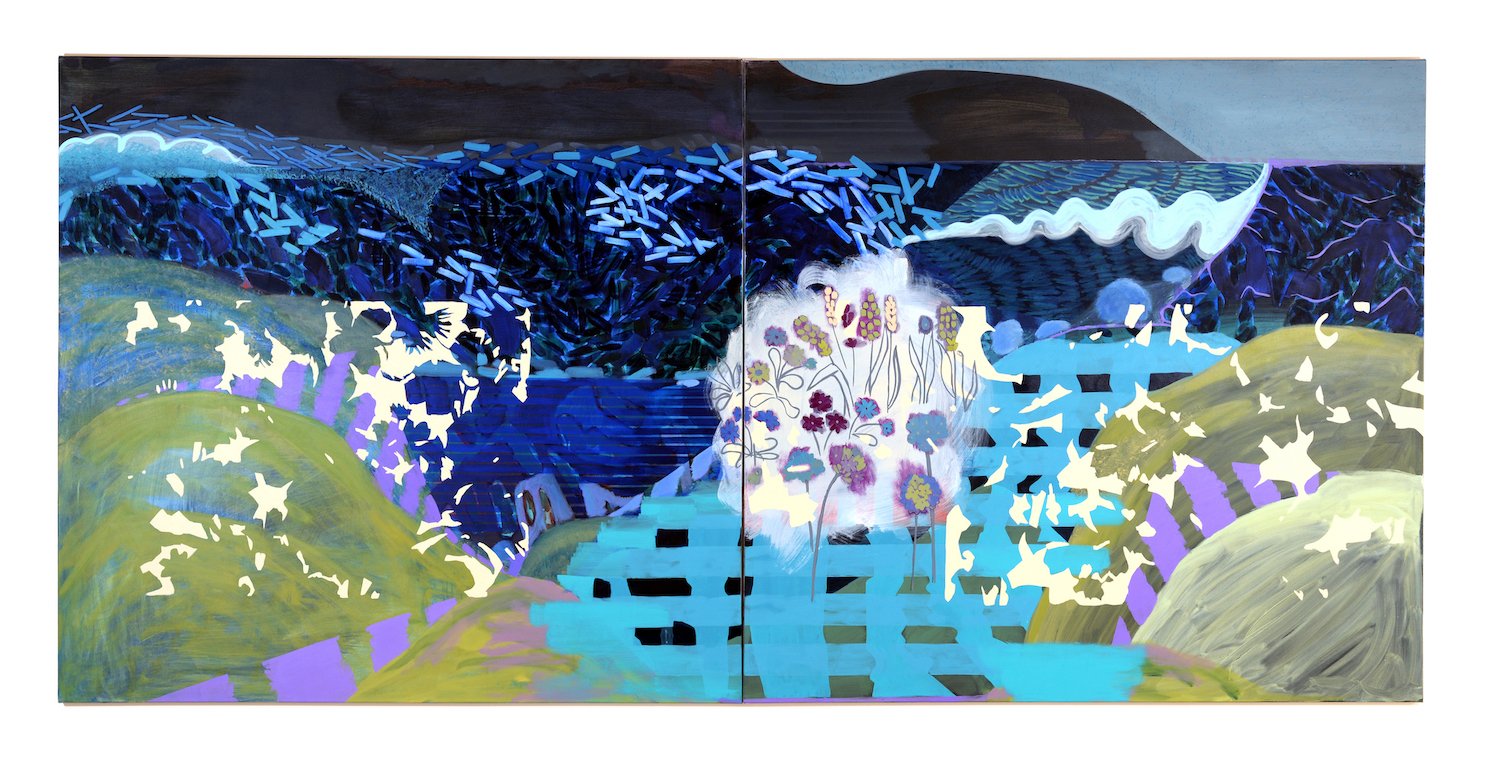

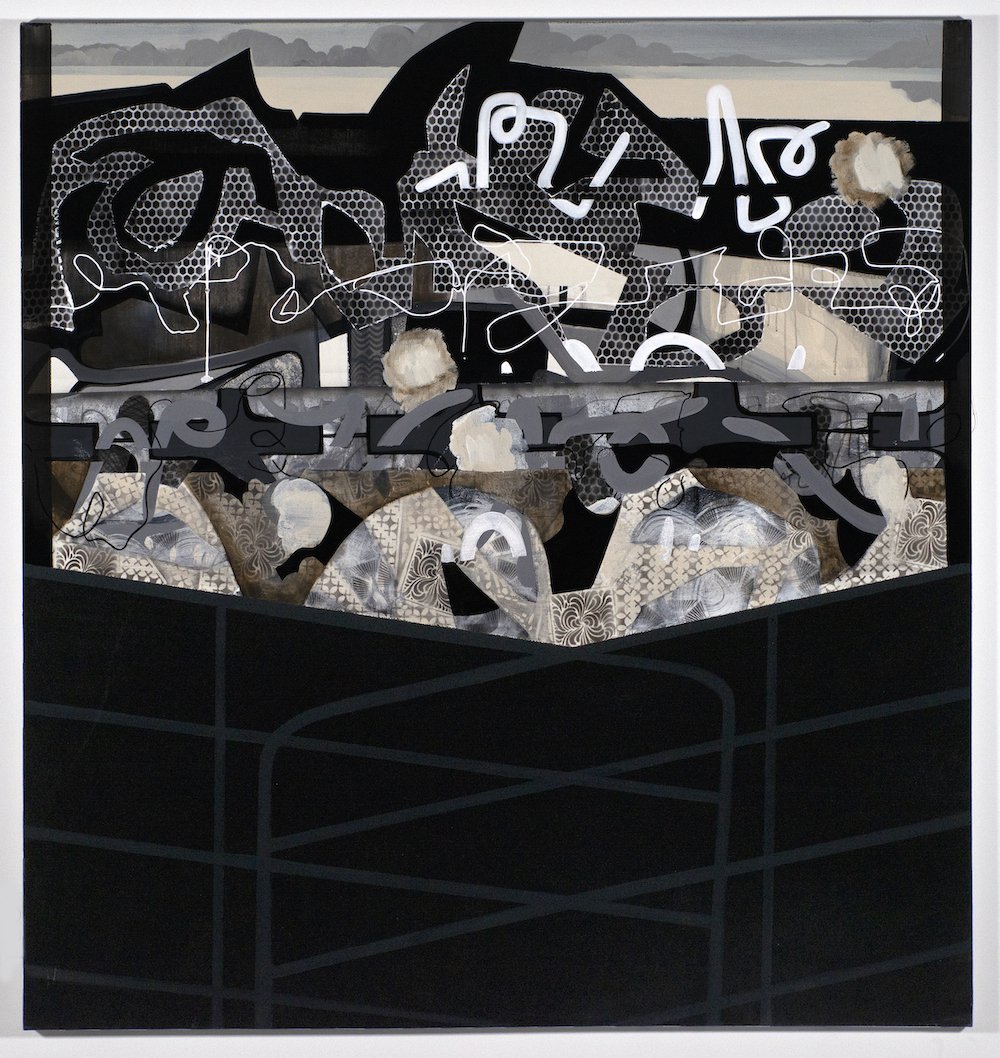
AAS: You are a 2023 Windgate Accelerator Grant awardee. Tell me about that program and what it means to you.
BB: The Windgate Accelerator Grant is a grant awarded by the Windgate Foundation, based in Little Rock Arkansas, whose purpose is to advance contemporary craft and strengthen visual arts education. For me, this grant will provide opportunities for professional development. A portion of the grant will fund travel to study the color structure and economical use of paint in Milton Avery’s paintings as a counterpoint to established modes of painting present in my work, as well as cover studio and material fees to nourish my next body of work. The remainder of the grant will help me connect to and build community with painters working in similar modes through direct mentorship, studio visits and residencies.
AAS: Brit where do you see you and your practice in five years from now?
BB: I’m looking forward to working things out in the studio in the year to come, take time to fully process my MFA experience and figure out what to bring with me and what to quietly leave behind.
Phil, thank you for sharing this opportunity with me. It’s been a pleasure to reflect on my experience at UArk and share parts of my artistic practice with you and your followers. While I have the opportunity, I would also like to say thank you to several important people – Valerie Jaudon, Carrie Moyer, and Shawn Powell for installing a sturdy painting foundation during my time at Hunter College, Lindsey Giese (Executive Director, River Arts Inc.), Kel Mur (Manager, River Arts on Water Gallery) and Allison Hobbs (Curator, MIXD gallery) for their patience and continued interest in what comes out of the studio, UArk Painting and Drawing faculty, Kristin Musgnug, Neil Callander, and David Andree, and finally, the generous artists on my thesis committee, Marc Mitchell, Sam King, Maryam Amirvaghefi, and Jody Thompson for providing mentorship, feedback, encouragement and unwavering support.
